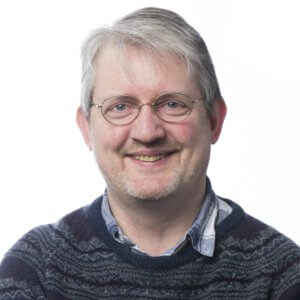Contact
DFM A/S
Kogle Allé 5
DK-2970 Hørsholm
Denmark
Tel: +45 7730 5800
E-mail: [email protected]
CVR/VAT#: DK29217939

CHARACTERIZATION OF QUANTUM MATERIALS
Production of quantum materials is time consuming, costly and involves many complex process steps. In order to reduce production costs and ensure high product quality, fast and non-destructive techniques for characterizing quantum materials during production are needed. DFM’s scatterometry development is directed towards length metrology, where the scatterometer is used for fast dimensional measurements of nanowires. The nanowire is a quantum material that can be further developed to constitute a quantum computer’s smallest processing unit (qubit). The scatterometer can quickly pinpoint errors in nanowire fabrication processes i.e.100 times faster than traditional approaches such as AFM and SEM, and with comparable vertical feature resolution and accuracy. The need for research in new quantum materials is identified in FORSK2025 p. 59.
For the duration of the project, DFM will develop a facility for characterizing nanowires by illuminating the nanowires and measuring the scattered light. Besides the physical instrumentation for the measurements, development of new algorithms is required to quantify the nanowire based on the scattered light. The improved scatterometer will be developed into a commercial product that will help researchers with their research on new quantum materials.
The potential markets of the scatterometer include researchers developing materials for quantum computers, semiconductor chip manufacturers, photovoltaics and LED manufacturers. DFM’s scatterometry solutions has already gathered interest, both from Danish and foreign stakeholders. This is reflected by industrial contact from Eurecat (Carlos Saez, ES), Ibsen Photonics (Kristian Buchwald, DK), Nil Technology (Theodor Nielsen, DK) and comments on BedreInnovation.dk from Copenhagen University (Jesper Nygaard, DK), DTU Compute (Mirza Karamehmedovic, DK) and Bergen University (Bodil Holst, NO).
Technology
The figure below shows the workflow of scatterometry, consisting of three steps. In step one a library of theoretical optical signals is generated by varying the sample dimensions. In step two the optical measurements on the nanowires are performed. In step three the best match between measured- and theoretical signals within the library is found and the structure dimensions are obtained from the best matching theoretical model. The current performance of the DFM scatterometer is limited by the optical range of the scatterometer and the geometry of structures that can be simulated. In the RK contract we will extend the wavelength range of the scatterometer and develop new methods for generation of adaptive structures.
